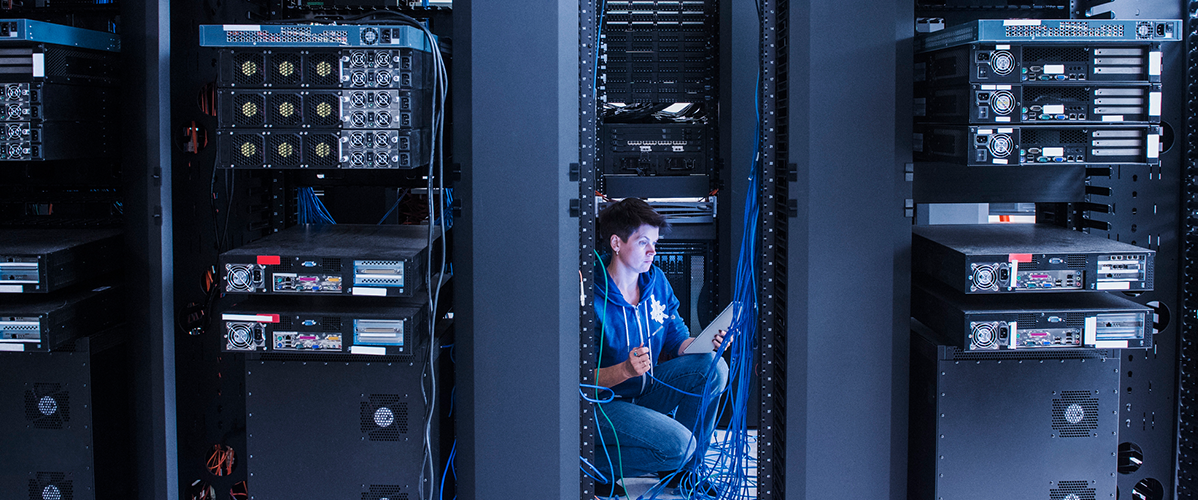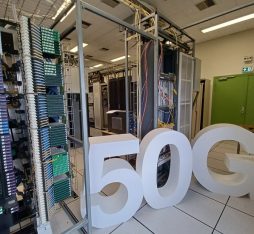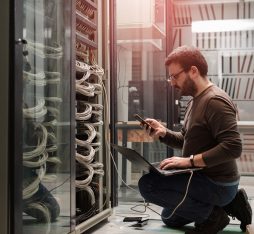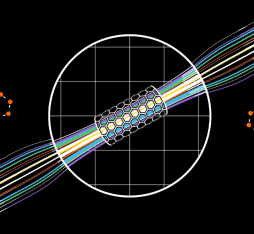“Machine learning algorithms are very useful for preventing congestion.”
Networks today are based on IP (Internet Protocol), with all usages (voice, internet data, TV, video) and data being carried in the form of IP packets on fibre optics and managed by routers. Network congestion occurs when the number of data packets to be transported from a source to a destination exceeds its capacity. In this situation, the routers store surplus data packets in buffers (a memory storage device integrated into peripherals that enables temporary storage) until they can be processed.
If the buffers are full, the packets cannot be processed and are “rejected”. This is known as a “packet drop” or “packet loss”. This can be caused by a technical breakdown or by a major and unforeseen increase in traffic.
When congestion occurs, the latency, the jitter, which expresses the variation of the latency, and the packet loss rate – criteria that affect quality of service (the network’s ability to carry data correctly) – increase.

In practice, this is translated as a slowing down of the network; the response times of certain applications increase. This can have an impact for example on real-time interactive communications. Typically, the quality of video calls is degraded and outages can occur. This congestion can take place at different locations on the networks: in the operator’s regional network, at the connection between two operators (for example for voice calls), in an international network (submarine cable for example), or in a data centre that manages services (such as videoconference).
Could the lockdown lead to congestion?
The situation we are living through today, in which billions of people across the world are locked down to avoid the spread of Covid-19, is subjecting the fixed and mobile internet networks to an exceptional load. The massive recourse to teleworking and homeschooling, as well as people’s increased connectivity requirements for entertainment and keeping in contact with loved ones have led to a major increase in traffic that is spread throughout the day.
Networks are made to deal with peaks
Since the beginning of the lockdown, despite a few specific connection problems that have been observed, and rapidly resolved, experts and telecommunications operators believe the networks should be able to cope with the extra increase in traffic due to the lockdown. The Body of European Regulators (BEREC) thus declared that it had not seen any major congestion problems.
In effect, the networks are made to deal with traffic peaks, which usually take place in the evening, in particular when high-audience events are shown (such as major sporting events or certain popular TV series). The existing capacities can therefore absorb the increase in connections that we are seeing at the moment.
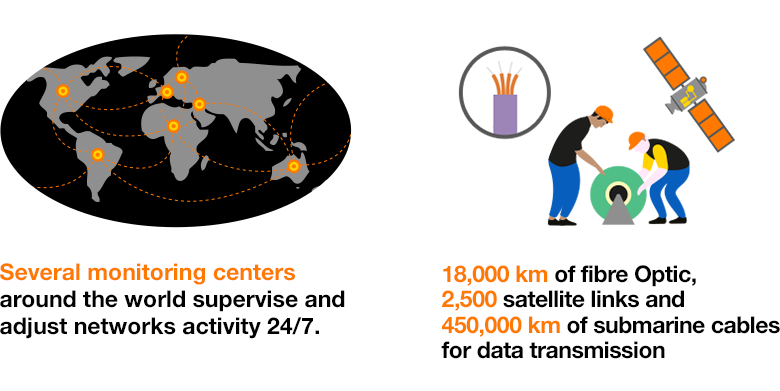
What’s more, operators always try to stay one step ahead of the exponential increase in the amount of data exchanged. Today’s networks are designed to be able to meet the demands of tomorrow’s digital uses.
Finally, under normal circumstances as in times of crisis, operators continuously monitor network activity, adjusting their capacity at all times. For example, Orange has a supervision centre in each of its countries as well as an international centre for international networks. Each of these centres comprises several physical sites, spread across the territory, to analyse the quality of the services used by its customers and to manage problems detected or anticipated on the networks.
This facility makes it possible to follow the evolution of traffic and user experience in real time, and to adjust the networks’ capacities as necessary. Indeed, Orange has managed to ensure service continuity during the crises.
Continuous network improvement
In order to respond to the acceleration of digital uses and to guarantee reliable connections, even in the event of a major increase in traffic, operators are investing massively in infrastructures and technologies that aim to improve overall network performance; fibre and 5G, but also submarine cables to reinforce the information highways, and artificial intelligence to be more efficient at all stages of network life (deployment, supervision, anticipation of evolutions, maintenance).
Submarine cables
Nowadays, 99 % of international traffic passes under the oceans through 1.3 million kilometres of cable. The transmission capacity of submarine fibre optic cables, which is far superior to that of satellites, makes it possible to support the interconnection of over 4 billion internet users across the world. These are true global information highways.
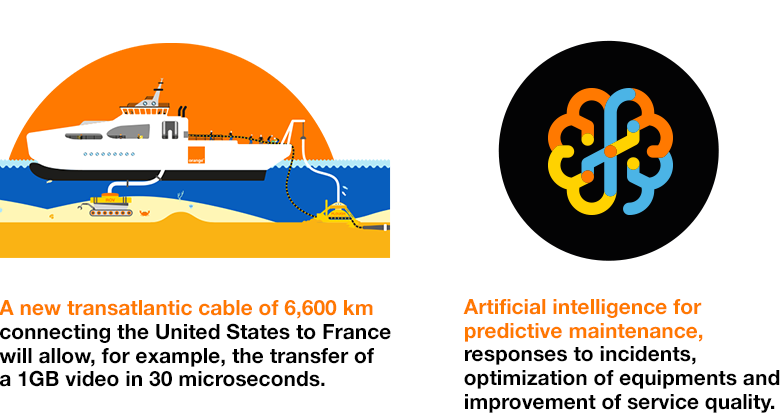
Orange is one of the market leaders. It has access to a network of over 450 000 kilometres of submarine cables installed in all the oceans and is taking part in new projects, alone or within the framework of consortiums. It is working for example with Google on the Dunant project, a new 6 000-km-long transatlantic cable linking the United States to France.
The deployment of submarine cables goes hand in hand with the complementary use of several optical technologies – such as wavelength division multiplexing – which significantly improve the capacities of fibre optics, and enable optimisation and rapid evolution of the network according to requirements.
Artificial intelligence
In an expert’s report on the networks of the future and AI, the French agency in charge of regulating telecommunications, Arcep (Autorité de régulation des communications électroniques et des Postes), analyses the assets of this technology in telecommunications networks. In a context where these networks are getting more complex and generate an abundance of data, AI is used by operators to optimise the operation of networks.
For example, it improves predictive maintenance: by learning from previous incidents and by observing weak signals, it can identify, or even anticipate, dysfunctions. In the event of an incident being detected, it “can rapidly consider the set of possible solutions, simulate their deployment, and measure the potential effects so as to propose them to an expert”.
In the case of network overload, machine learning algorithms help operators to follow the evolution of traffic and adjust the network’s capacities, prevent congestion, and, when necessary, react very quickly.
Thus, whether it’s about working, accessing education and entertainment, or staying in contact with one’s loved ones, Orange is fully mobilised to guarantee the reliability of its networks and digital services.


